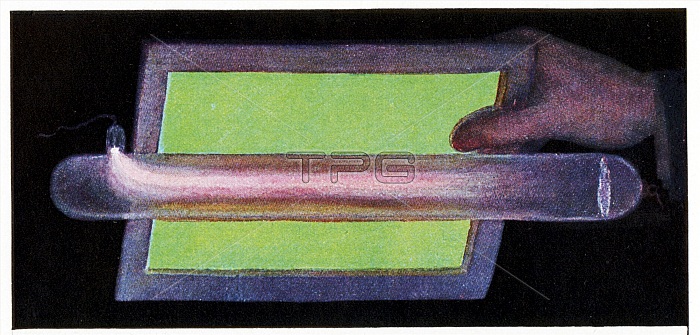
Crookes tube. 19th Century artwork showing someone demonstrating the fluorescent effect seen on a cardboard screen painted with barium platinocyanide when exposed to the light of a Hittorf Crookes tube. Invented by William Crookes (183MB2-1919) in the late 19th century this apparatus was used to investigate the path taken by electrons, or cathode rays as they were known. The electrons are emitted from a central element towards the glass. As the electrons collide with the glass they fluoresce. This apparatus was able to show that electrons travel in straight lines. The overall glow of the apparatus is caused by the excitation of the remaining gas molecules in the tube. From Weltall und Menscheit (Universe and Humanity), by Hans Kraemer (ca.
| px | px | dpi | = | cm | x | cm | = | MB |
Details
Creative#:
TOP13789588
Source:
達志影像
Authorization Type:
RM
Release Information:
須由TPG 完整授權
Model Release:
N/A
Property Release:
No
Right to Privacy:
No
Same folder images:

 Loading
Loading